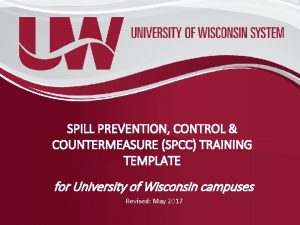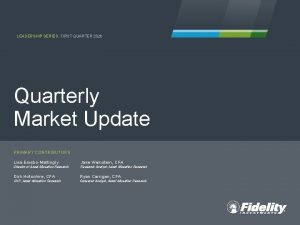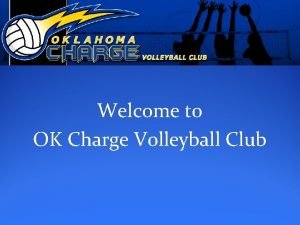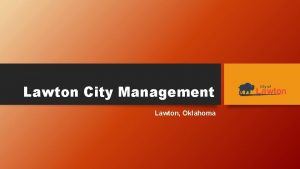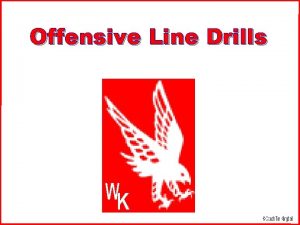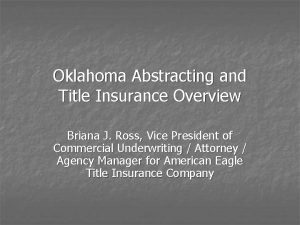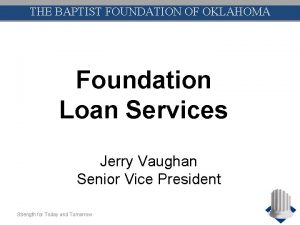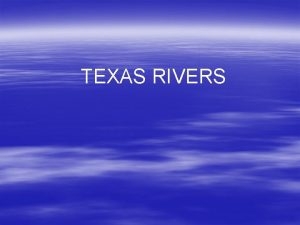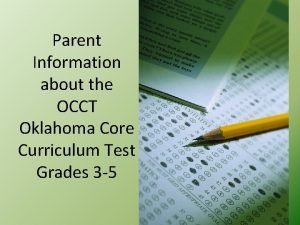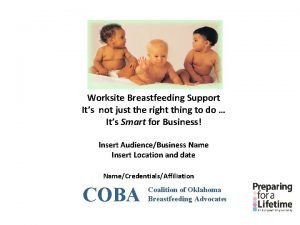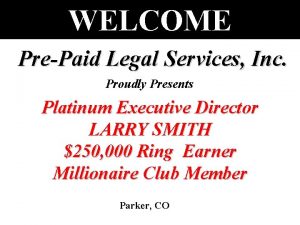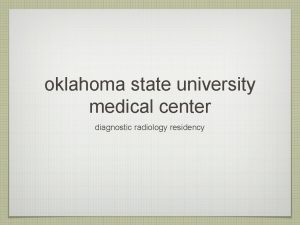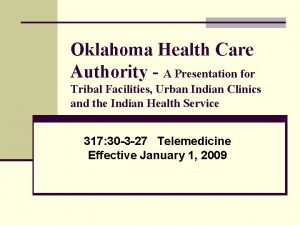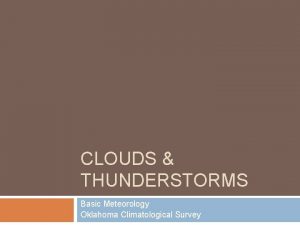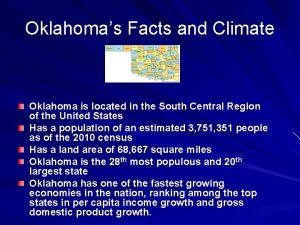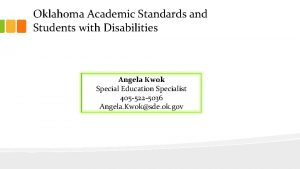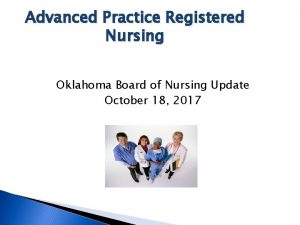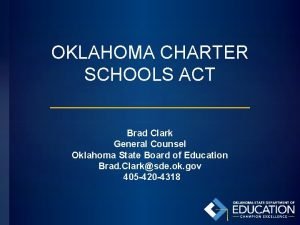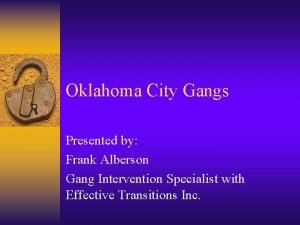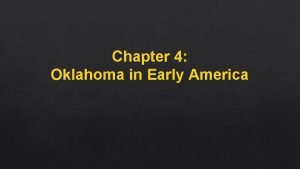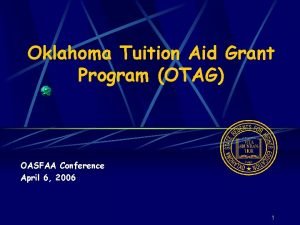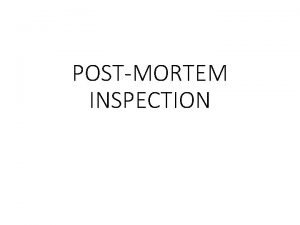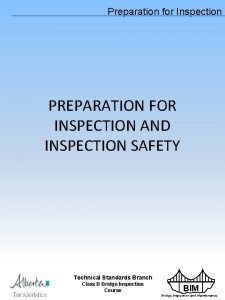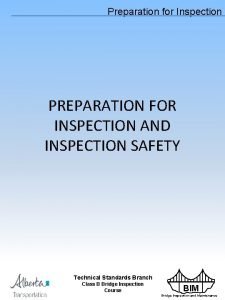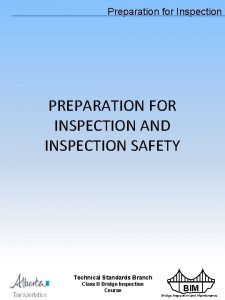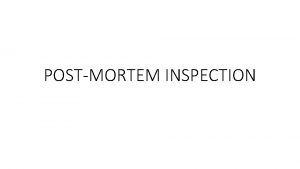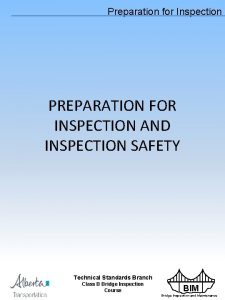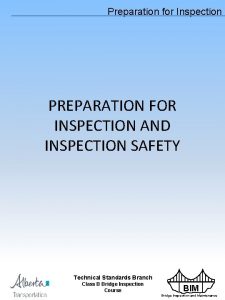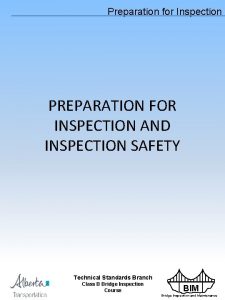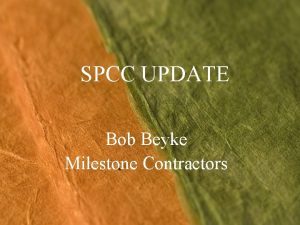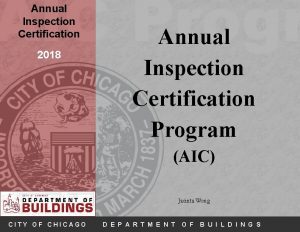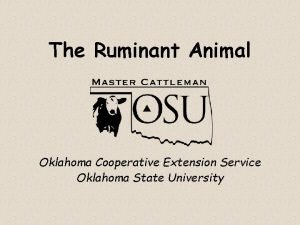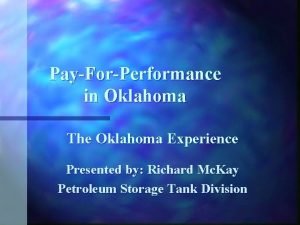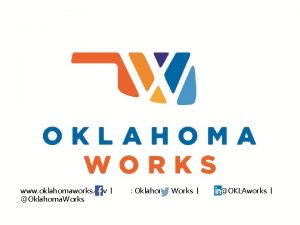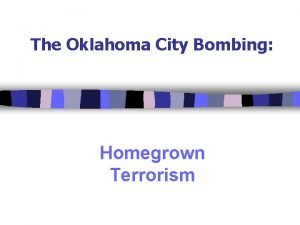SPCC Marina Inspection Update 2018 Oklahoma Marina Association



































- Slides: 35

SPCC Marina Inspection Update - 2018 Oklahoma Marina Association Inspector Tom Mc. Kay

Recent Compliance Assistance Documents • 40 CFR 112 – Final & Most Recent Regulation (7/1/15) • Latest SPCC Inspection Checklists (6/1/2014) • SPCC Guidance for Regional Inspectors (8/28/13 – Update Pending) • SPCC & FRP Workshop for Onshore Facilities (Scheduling) in Addison, TX

SPCC Inspection Process • Facility Inspection Targeting – History of non-compliance – Spill history of an geographic area – Spill Responses ** – Distance to navigable waters – Proximity to sensitive ecosystems – Citizen Complaints ** – State/Federal referrals **

The Most Common SPCC Violations At Marinas

No SPCC Plan Common Violation • Commonly found at facilities that did not know that they were regulated – Small facilities – Facilities that had been purchased but had not put together a plan yet. 5

No PE Certification Common Violation • PE certifies that the facility’s equipment, design, construction, and maintenance procedures used to implement the Plan are in accordance with good engineering practices. • PE certification must be completed in accordance with law of the state in which the PE is working • Generally certification includes: – – 6 Name Registration number and State Date of Certification PE seal affixed to Plan

Qualified Facility Applicability If the facility total aboveground oil storage capacity is 10, 000 gallons or less … And the facility has… Then the facility is a: Tier I Qualified Facility: No individual aboveground Complete and self-certify oil containers greater than Plan template (Appendix G Within three years prior to the 5, 000 gallons; to 40 CFR part 112) in lieu of Plan certification date, or since a full PE-certified Plan. becoming subject to the SPCC rule if in operation for less than three years, the facility has not had: A single discharge of oil to Tier II Qualified Facility: navigable waters or adjoining Prepare a self-certified Plan shorelines exceeding 1, 000 Any individual aboveground in accordance with all gallons, or oil container greater than applicable requirements of Two discharges of oil to 5, 000 gallons; § 112. 7 and subparts B or C navigable waters or adjoining of the rule, in lieu of a PEshorelines each exceeding 42 certified Plan. gallons within any 12 -month period. 1

No Records Common Violation • Owner/operator does not have records of inspections or tests and spill prevention training. • Facility maintains very generic records that do not cover all of the requirements of the rule. • Common to hear that they do inspections, but do not write them down. • Lack of 5 -Year Plan Review ** 8

Co Totes and Drums not in secondary containment m Common m Vi on ol Violation at io n


No General Containment for Loading Areas Pump dispensers w/out general containment Load-line w/out general containment

No Secondary Containment



Secondary Containment Appears Inadequate containment

Containment Not Impervious To Contain Oil Cracks in concrete containment Cracks in cinder-block containment

Piping and Valve Issues

Lack of Tank Integrity Testing Protocols SPCC Plan Requirements Implementation Identify Standard Used STI SP 001 Conduct & Record external inspections per standard used Best Standard for Marinas API 653 Identify Inspection and Testing Protocols External inspection Shell Testing(ultrasonic) Conduct & Record Nondestructive shell thickness testing; ie ultrasonic or hydrostatic.

STI SP 001 Inspection Protocols • An assigned knowledgeable marina employee conducts periodic inspections of all marina shop-built Above Ground Storage Containers (ASTs) • Records of inspections consist of the monthly and annual inspection checklist in the Steel Tank Institute (STI) SP 001 Standard

STI SPOO 1 Inspection Protocols For Typical Marina Tanks

STI SP 001 - Spill Control and CDRM CONTINUOUS RELEASE DETECTION METHOD (CRDM) – a means of detecting a release of liquid through inherent design. Examples of CDRM: Secondary containment AST, including double-wall AST Elevated AST, with or without release prevention barrier. SPILL CONTROL - a means of preventing a release of liquid to the environment, including adjoining property and waterways. Spill control methods include : Secondary containment dike/berm Secondary containment AST Secondary containment system

Typical Marina Tank Configuration Within the SP 001 Standard



Marinas With Underground Storage Tanks • USTs are exempt from SPCC regulatory requirements as long as the facility follows 40 CFR 280 and/or 281. • Most marinas incorporate Oklahoma UST protocols administered by the Oklahoma Corporation Commission – Petroleum Storage Tank Division.

SPCC Plan Maintenance & Housekeeping * Review and Update Your SPCC Plan – Most members were brought into compliance in 2009 – Plans should have been updated by 11/10/2011 to incorporate new regulatory amendments. * Must document Plan review and evaluation. Sign statement at beginning or end of Plan or in a log or an appendix: “I have completed review and evaluation of the SPCC Plan for (name of facility) on (date), and will (will not) amend the Plan as a result. ” PE must certify any “technical” amendment to Plan.

Continued SPCC Maintenance • Keep current on overall facility inspection records. • Keep current on spill prevention training for oil & fuel handling personnel. • Both inspection records and training records are required to be maintained with your plan for 3 years. • Follow and document tank integrity inspection & testing protocols developed for your facility.

Continued SPCC Maintenance • Tier II Tank Registration with ODEQ, Local Emergency Planning Committee (LEPC), and local fire department due annually on March 1 st • Maintain requisite Material Safety Data Sheets (MSDS) for hazardous materials including fuel stored at your marina






Conclusions • Emphasis upon joint inspections with both State and Federal Agencies. • Our goal is to increase compliance awareness and improve response performance.

Contact Information • Inspector Tom Mc. Kay • Office Phone: (214) 665 -2180 • E-Mail: mckay. tom@epa. gov
 Spill prevention plan template
Spill prevention plan template ........ is an alternative of log based recovery.
........ is an alternative of log based recovery. Gartner magic quadrant bi 2018
Gartner magic quadrant bi 2018 Fidelity quarterly market update q1 2018
Fidelity quarterly market update q1 2018 Down syndrome association of central oklahoma
Down syndrome association of central oklahoma Que letra continua m v t m j
Que letra continua m v t m j Oklahoma charge volleyball
Oklahoma charge volleyball Oklahoma parents center
Oklahoma parents center Oklahoma city manager
Oklahoma city manager Reconstruction oklahoma
Reconstruction oklahoma Oklahoma supplemental online course program
Oklahoma supplemental online course program Osde teacher certification
Osde teacher certification Aka graduate mip
Aka graduate mip Oklahoma parents center
Oklahoma parents center Oklahoma department of career and technology education
Oklahoma department of career and technology education Are oklahoma drills illegal
Are oklahoma drills illegal Pl focus
Pl focus Oklahoma alternative placement program
Oklahoma alternative placement program Oklahoma abstractors board
Oklahoma abstractors board Oklahoma baptist foundation
Oklahoma baptist foundation River separates texas and oklahoma
River separates texas and oklahoma Occt oklahoma
Occt oklahoma Special education handbook oklahoma
Special education handbook oklahoma Oklahoma breastfeeding laws
Oklahoma breastfeeding laws Www.google
Www.google Prepaid legal service inc
Prepaid legal service inc Osu radiology tulsa
Osu radiology tulsa Oklahoma health care authority
Oklahoma health care authority Cloud types
Cloud types What is oklahomas climate
What is oklahomas climate Oklahoma state standards ela
Oklahoma state standards ela Oklahoma board of nursing supervising physician
Oklahoma board of nursing supervising physician Brad clark oklahoma
Brad clark oklahoma South side locos gang
South side locos gang Chapter 4 oklahoma in early america
Chapter 4 oklahoma in early america Otag grant
Otag grant
